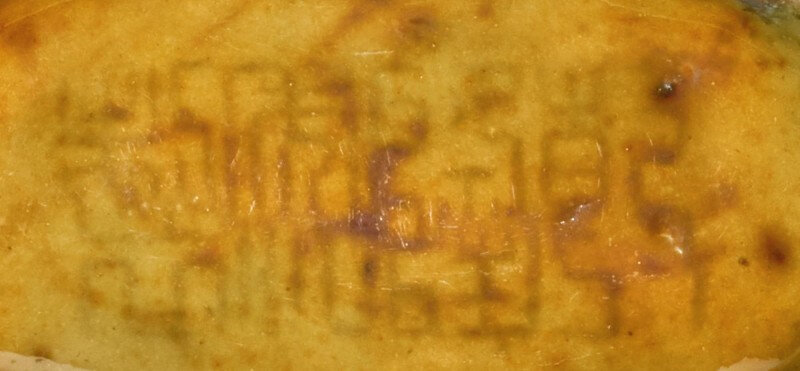A rare small flambé-glazed moonflask, Qianlong incised seal mark and period (1736-1795)
Lot 8. A rare small flambé-glazed moonflask, Qianlong incised seal mark and period (1736-1795). Height 15.3 cm, 6 in. Estimate: 80,000 - 120,000 GBP. Lot sold: 450,600 GBP. Courtesy Sotheby's.
elegantly potted with a gently flattened spherical body surmounted by a slender cylindrical neck flanked by a pair of ruyi handles, covered overall with a brilliant rich purple glaze with milky-blue and lavender streaks, the base glazed brown and incised with a four-character seal mark.
Literature: Helen D. Ling and E.T. Chow, Collection of Chinese Ceramics from the Pavilion of Ephemeral Attainment, Hong Kong, 1950, vol. IV, pl. 192.
Inspired by early Ming dynasty (1368-1644) flasks, this piece is covered in a brilliant streaky glaze with attractive variegated hues of purple, crimson and milky blue. The striking flambé glaze was first developed at the imperial kilns in Jingdezhen during the preceding Yongzheng reign (r. 1723-1735), and resulted from experiments at reproducing the fabled Jun glazes of the Song dynasty (960-1279). By 1735, nine varieties of Jun-type glazes were being used at Jingdezhen, and the present type was considered by 18th century scholars and connoisseurs to even surpass the original.
Flasks of this form and glaze are very rare and no other closely related example appears to have been published, although a slightly smaller flambé flask of similar form, but with a straight neck and lacking the reign mark, in the British Museum, London, is illustrated in Soame Jenyns, Later Chinese Porcelain. The Ch’ing Dynasty, London, 1951, pl. C, no. 1.
The fattened form and garlic mouth of this flask appears to have been inspired by a rare type of porcelain flasks made in the Yongle period (r. 1403-1424), which was itself modelled after Middle-Eastern metal prototypes. The design was revived in the Qianlong period, although examples are seldom found covered in monochrome glazes. A Qianlong mark and period flask of this form and proportions, but painted in famille-rose enamels with flowers against a pink sgraffiato ground, from the collection of Alfred Morrison, was sold at Christie’s London, 9th November 2004, lot 47, and again at Christie’s Hong Kong, 29th May 2007, lot 1376.
Sotheby's. Imperial Porcelain – A Private Collection, London, 4 November 2020

/https%3A%2F%2Fprofilepics.canalblog.com%2Fprofilepics%2F1%2F0%2F100183.jpg)
/https%3A%2F%2Fstorage.canalblog.com%2F03%2F02%2F119589%2F96711876_o.jpg)
/https%3A%2F%2Fstorage.canalblog.com%2F11%2F31%2F119589%2F94773502_o.jpg)
/https%3A%2F%2Fstorage.canalblog.com%2F20%2F83%2F119589%2F94772815_o.jpg)
/https%3A%2F%2Fstorage.canalblog.com%2F26%2F72%2F119589%2F75604929_o.jpg)
/https%3A%2F%2Fstorage.canalblog.com%2F59%2F60%2F119589%2F26458628_o.jpg)





/http%3A%2F%2Fstorage.canalblog.com%2F50%2F51%2F119589%2F112778215_o.jpg)
/http%3A%2F%2Fstorage.canalblog.com%2F27%2F64%2F119589%2F106624658_o.jpg)
/image%2F1371349%2F20240423%2Fob_b2fe42_telechargement-9.jpg)
/image%2F1371349%2F20240423%2Fob_af8bb4_telechargement-6.jpg)